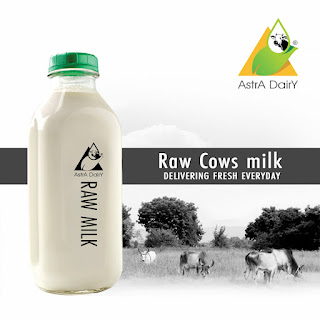What is A2 milk and what are its supposed advantages?
A2 milk, whose presence has intensified in recent years, is touted as being easier for some people to digest. What is true about that?
Milk and dairy products are foods of important nutritional quality. It is a food that, thanks to its healthy properties and its nutritional contribution, especially calcium, and used in a balanced way, helps our health.
It is proved that A2 milk is a food of high nutritional value that maintains a good balance in terms of its macronutrients. It stands out in minerals such as calcium, phosphorus and magnesium, keys for bone and muscle mass; lactose, short and medium-chain fatty acids, triglycerides, and unsaponifiable lipids. It is also important as a source of vitamins for groups B, A, and D.
But despite all these benefits, some people have trouble digesting milk, even lactose-free varieties. They may have been struck by a new product that promises to be easier to digest. This is A2 milk. Does it really help us?
Differences between A1 and A2 milk
We often blame lactose intolerance when symptoms such as abdominal pain and bloating, diarrhea, and gas appear in some people. This happens when they don't make enough of an enzyme called lactase, which breaks down lactose (the simple sugar in milk) in the small intestine.
In some cases, even by stopping lactose, people experience no relief. And this is where the A2 milk would come in.
The combinations A1 and A2 designate two types of casein (82% of the protein content of milk is casein), one of the main types of milk protein. In reality, it is a mixture of different proteins, each with a different amino acid composition. One of the most abundant proteins is beta-casein.
From a nutritional point of view, A2 milk is similar to A1 milk in terms of the amount of protein, fat and calcium. Most cows produce a mixture of A1 and A2 beta-casein, while others only produce A2 beta-casein, which is where A2 milk comes from.
Depending on the breed of cow, these two particular proteins are present in milk in varying amounts. The two proteins are almost identical, but with a small difference in their chemical composition: the amino acid histidine is found in position 67 of the amino acid chain in A1, while in A2 this position is occupied by proline.
The whole basis of the supposed problem with A1 is its "pesky" amino acid at this position. This means that, when the A1 protein breaks down, it can create the BCM-7 peptide, related to the opiate family and to which adverse effects such as delayed intestinal transit and even inflammatory processes are attributed
Research published in Advances in Nutrition supports the fact that milk containing A1 protein may take much longer for some people to digest than milk containing only A2. This slowness could cause gastrointestinal inflammation and symptoms such as gas and abdominal pain. But there is not yet enough solid scientific evidence to support it.
The European Food Safety Authority (EFSA), in a comprehensive review carried out in 2009, nullified the claims that A1 proteins can be harmful to our health.
Is A2 milk an option for those who cannot tolerate lactose?
As we have seen, A2 milk contains the same amount of lactose as non-A2 milk. Therefore, in diagnosed cases of lactose intolerance, A2 will not provide the benefits that lactose-free milk would.
Picking up on the thread we started at the beginning, what happens in some people who think they have lactose intolerance could actually be related to an aversion to A1. In these cases, consuming A2 milk can help prevent side effects that people experience from drinking regular milk.
The best and purest organic a2 milk in Chennai is offered by Astra dairy cow milk, which is of the A2 milk variety. We give our Desi Cows organic food to eat and let them roam freely to ensure that they receive the utmost care. Our Desi cow consumes only organic food, and we bag the fresh cow milk right away after milking her without using any preservatives, thus our milk is all organic.
We also offer our customers a selection of organic fruits, vegetables, and greens that are farm fresh and farmed using sustainable agricultural practices.




Comments
Post a Comment